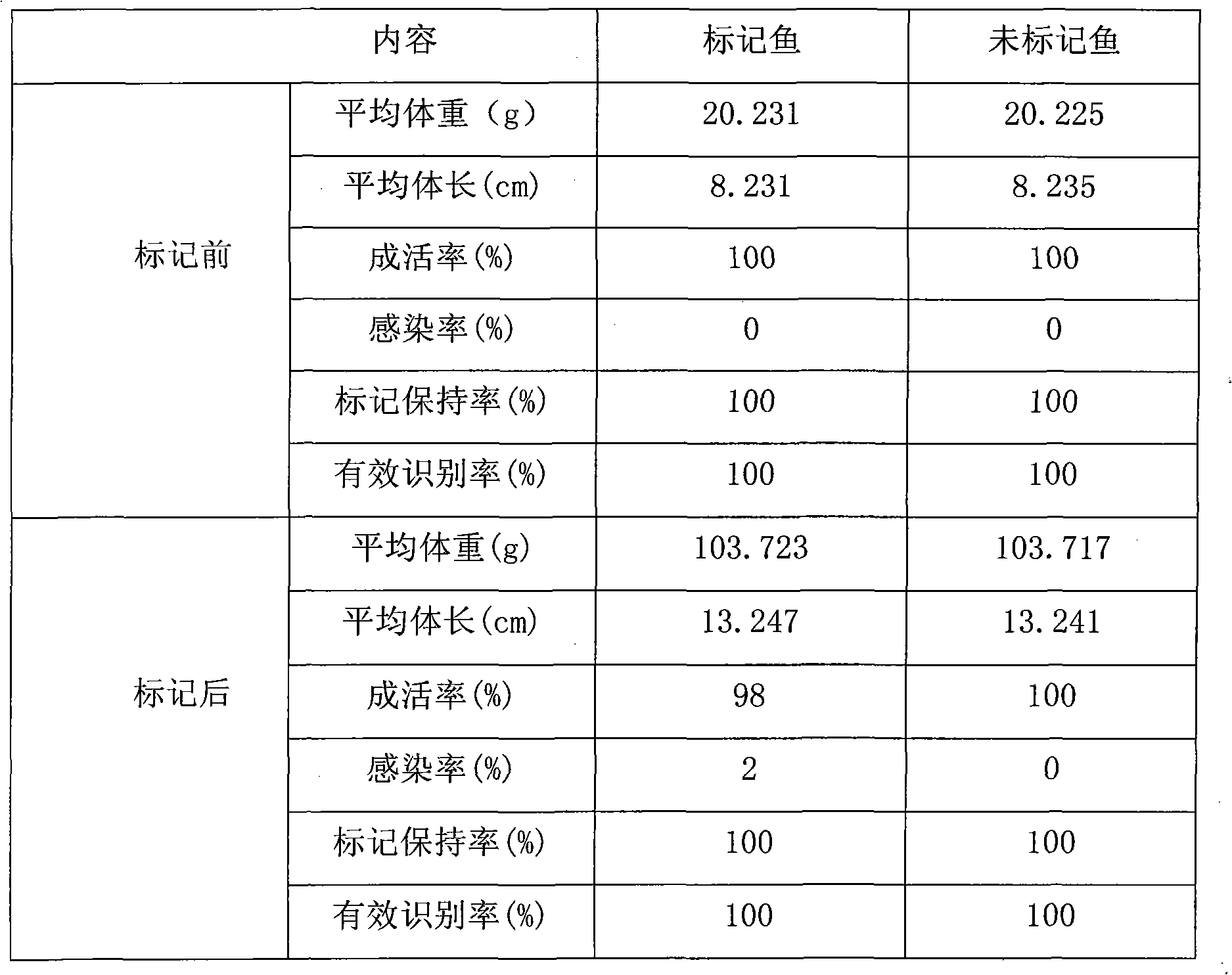Java tilapia breeding marking method
A marking method, tilapia technology, applied in fish farming, application, climate change adaptation, etc., can solve the problems of large difference in detection effect of fluorescent markers, no significant survival rate, limited use range, etc., and achieve obvious distinction effect , low cost, and the effect of reducing damage
- Summary
- Abstract
- Description
- Claims
- Application Information
AI Technical Summary
Problems solved by technology
Method used
Image
Examples
Embodiment Construction
[0047] This experiment was carried out in the National Guangxi Nanning Tilapia Breeding Farm.
[0048] The method of the invention includes: 1. preparation before marking; 2. fish body marking method and marking plan; 3. fish body marking.
[0049] 1. Preparation before marking
[0050] 1) Pulling the net to practice fish
[0051] Stop feeding the fish that will be marked the day before, and perform net pulling exercises to adapt the fish to external stress; at the same time, the fish secrete mucus and excrete feces during the intensive process to increase the adaptability to hypoxia. When pulling the net, drive the fish into the net slowly, lift the net clothes, and put the fish back into the original pond after 30 minutes in a semi-water state.
[0052] 2), pull net fishing
[0053] Before marking, pull net fishing and select 200 tilapia families with similar specifications that need to be marked, with a weight of about 20 grams, to eliminate the impact caused by the large ...
PUM
 Login to View More
Login to View More Abstract
Description
Claims
Application Information
 Login to View More
Login to View More - R&D
- Intellectual Property
- Life Sciences
- Materials
- Tech Scout
- Unparalleled Data Quality
- Higher Quality Content
- 60% Fewer Hallucinations
Browse by: Latest US Patents, China's latest patents, Technical Efficacy Thesaurus, Application Domain, Technology Topic, Popular Technical Reports.
© 2025 PatSnap. All rights reserved.Legal|Privacy policy|Modern Slavery Act Transparency Statement|Sitemap|About US| Contact US: help@patsnap.com

